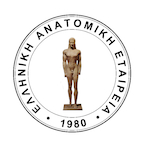Anatomy Museum
The Anatomy Museum is housed on the first floor of the Anatomy Building at the School of Medicine, Aristotle University of Thessaloniki (A.U.Th.), in a separate space since 2010. Its inauguration coincided with the 70th anniversary of the Laboratory of Anatomy and Surgical Anatomy. The museum aims to highlight the long-standing educational and research activities of the Anatomy Department and promote the field of Anatomy by sharing historical medical knowledge with the academic community and society.
The museum’s creation was inspired by the interest and dedication of Professor Konstantinos Natsis, Director of the Laboratory, to preserve the invaluable scientific and cultural artifacts of former professors and staff members, including medical tools, anatomical maps, historical photographs, research and educational instruments, and rare collections of bones. These items were used in research and teaching by the early professors of the Medical School and Anatomy Department and were kept in the department’s storage. Over time, the museum’s collections have been enriched with other samples and objects collected and maintained by the Laboratory staff.
In addition to human skeleton and bone collections, the Anatomy Department has an invaluable collection of bones with unique anatomical features, gathered through the research activities of its members. These collections date back to the time of Professor Nikolaos Michalakeas (1942-1949), the founder of the Anatomy Department, although most of the items have been collected over the past 40 years. Among these collections are bones with prosthetics and internal fixation materials. The museum also houses the first ultramicrotome, anatomical tools, the optical microscope of the late Professors Savas, Kafantaris, and Polyzonis, anthropometric tools, printing plates from anatomical books, rare anatomical atlases from 1549, the first topic polygraphs, rare administrative objects, and the chair of the first professor of Anatomy, the late Nikolaos Michalakeas.
Additionally, there are machines used for preparing electron microscope tissue samples, such as ultramicrotomes, centrifuges, and a double-distilled water apparatus. The museum also features old microscopes used in student education, knife-sharpening systems, precision scales, an optical microscope donated by the British Friends of Greece Organization, old anatomy books, the department’s old stamps, administrative items such as typewriters and telephones, as well as projection machines, reel tape recorders, teaching projectors, old teaching pointers, and anatomical maps.
The Anatomy Museum is open to the public every Friday from 12:00 to 13:00 p.m.
